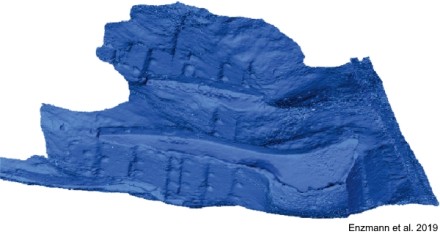History
Discovery by a fisherman
In 2014, a floor timber of a wreck was accidentally brought to the surface by a fisherman in de Schlei Fjord in Northern Germany, who reported the find to the State Archaeology Department of Schleswig-Holstein (ALSH). A wreck was located, situated in close proximity to the village of Fahrdorf (from which it got its name) near Schleswig at a shallow depth of ca. two metres. It was investigated between 2015-2017 under the auspices of the ALSH by students and divers of the Maritime Archaeology Programme at the University of Southern Denmark (SDU) and the Working Group for Maritime and Limnic Archaeology (Arbeitsgruppe für Maritime und Limnische Archäologie, AMLA) at the University of Kiel.

Due to the almost non-existent visibility in the Schlei fjord, the wreck was initially haptically assessed by divers. In later campaigns, carried out by AMLA, the wreck was surveyed by constructing a frame along which an underwater camera was moved over the wreck in very close distance to the wreck at a visibility of only 30-40 cm. The exercise was repeated in winter at a slightly better visibility. The underwater footage was converted into images, which were processed with a Structure-from-Motion (SfM) software to create a 3D-model of the wreck. Through this ground-breaking method, a model of the wreck was generated that was detailed enough to infer even details on a constructional level.

Description
The dendrochronological analysis indicates a cutting date between 1106 and 1121. The timber seems to be of local provenance.
The wreck has several characteristics diagnostic for the Nordic clinker-building tradition, like a bite-stanchion.
Status
The wreck shows signs of degredation caused by shipworm (teredo navalis) and other marine borers. Normally, the shipworm cannot survive in the Schlei Fjord due to the low salinity, but in the later summer months the salinity rises to higher levels, so there can be an influx of marine borers in rare occurrences, which are not necessarily recent.
The site is also subject to a change due to erosion and sedimentation, so the state of preservation is monitored by the ALSH in cooperation with AMLA divers at regular intervals.
References
- Enzmann, J., Jürgens, F., Wilkes, F. (2019).
Der letzte Wikinger? Ein Wrack aus dem 12. Jh. bei Fahrdorf, Kr. Schleswig-Flensburg.
Archäologie in Schleswig 17.
pp 133–152. - D. Wilken, T. Wunderlich, H. Hollmann, M. Schwardt, W. Rabbel, C. Mohr, D. Schulte-Kortnack, O. Nakoinz, J. Enzmann, F. Jürgens, F. Wilkes (2019).
Imaging a medieval shipwreck with the new PingPong 3D marine reflection seismic system.
Archaeological Prospection 26.3.
pp 211-223. - Enzmann, J., Jürgens, F., Wilkes, F. (forthcoming).
The Fahrdorf wreck: another large 12th-century cargo ship in the Schlei, northern Germany.
pp 211-216.
Marseille. - Christian-Albrechts-Universität zu Kiel.
Das hochmittelalterliche Wrack bei Fahrdorf.